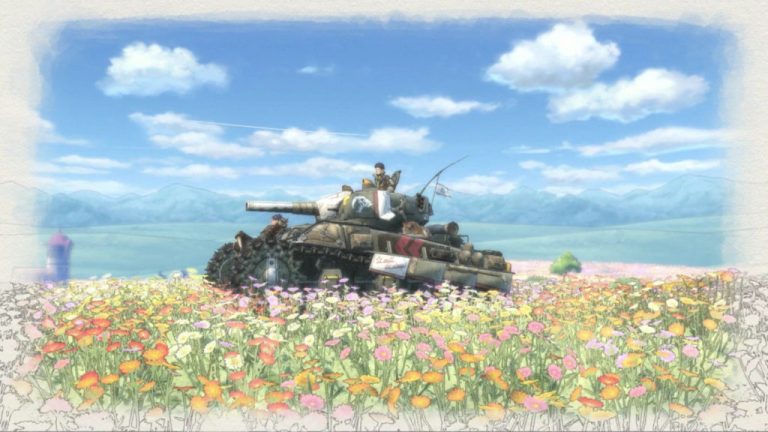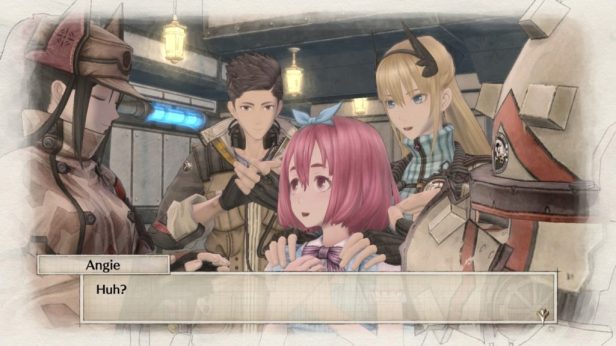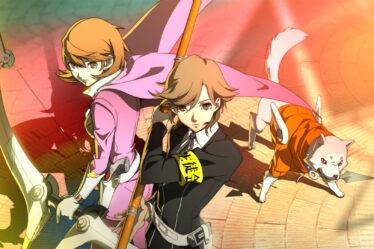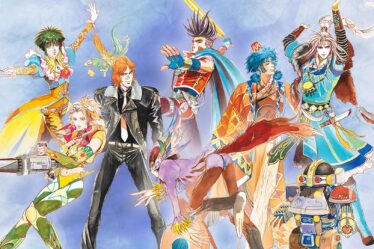
[This article appeared in Italian on GeekGamer.it titled “Valkyria Chronicles 4 – Ritorno alle origini”.]
Released in 2008, the first chapter of the Valkyria Chronicles series brought to PlayStation 3 a fascinating universe inspired by the conflicts that raged in Europe during the Second World War. Its dramatic storytelling (heavily influenced by classic Anime tropes) was combined with a fascinating cel-shaded aesthetic offered by the Canvas Engine, a graphics engine capable of giving life to pastel-colored environments that seemed drawn on a canvas.
Today, if we would not consider that this new Valkyria Chronicles installment is followed by the number “4”, we would probably guess that the new SEGA title, now available on PS4, PC, Xbox One and Nintendo Switch, could directly connect to the legacy of the PS3 episode, since both the art direction and a large part of its mechanics are largely the same. In truth, the continuity of this JRPG series is a little more complicated than that: two of the numbered chapters were released for the now-defunct PSP, aimed mainly at the Japanese market in the desperate attempt of appealing a new audience with different story elements and a military school setting. This decision was clearly made after failing to gather enough interest on Sony’s home console, especially in the West, where only a few players realized the potential of this tactical JRPG series that looked just like a Japanese version of X Com.
The second chapter was underwhelming (especially from a narrative point of view) and failed to meet the expectations of the Western managers of SEGA, therefore the third iteration, which was definitely more appealing than the predecessor story-wise and featured tons of improvements, was released only in Japan (but a group of fan translators fixed that). Many doubted that the series could have a future in the West since the Japanese company decided to not trust its dormant potential after the poor sales of the second installment, released in the West in a time where piracy dominated the PSP scene and sales of digital and retail software were already compromised.
After several online petitions and strong pressure from the fanbase, SEGA decided to re-launch the first chapter of the saga on Steam, achieving an unprecedented success confirmed by triumphant press releases; strong of this, Valkyria Chronicles returned on PlayStation 4 and Nintendo Switch as remasters, followed by the release of Valkyria Revolution, a forgettable spin-off released on PS4, Xbox One and PS Vita, set in an alternative universe. This game, based on Shakespeare’s Hamlet and brought to life by a new graphics engine that rendered pictures resembling watercolored painting in motion, put a major emphasis on action mechanics while indulging in a slow-paced narrative told in numerous cut-scenes. The spin-off diverged so much from the original series to the point that only a few aspects of the lore were maintained, while the hack’n’slash nature of the gameplay was compromised by a large number of cutscenes that kept interrupting the progression. The game was definitely not what the fandom wanted (and the soundtrack composed by Yasunori Mitsuda is probably the only thing that will be remembered about it) and Valkyria Revolution achieved the lowest Metacritic score of the series. That said, SEGA tried changing the gameplay of the game following the feedback on the demo released some months earlier, but its commitment didn’t meet the expectations of the players. This confusing production received a strong backlash from the fandom both in Japan and in the West.
After experimenting new ways to conceive the saga, today SEGA seems to have found the most congenial direction for this brand. Not surprisingly, Valkyria Chronicles 4 is almost indistinguishable from the first episode; the return of the original character designer and music composer and its dreamy atmosphere make it the proper sequel that fans requested for 10 years.
Set in the same continuity of the first Valkyria Chronicles but in a different region, the game puts the player in the shoes of Claude Wallace, a militia captain but most importantly a born pacifist. This time the hero of the game is joined by a group of childhood friends who enrolled in the army after war changed their life forever, putting the basis for a coming-to-age plotline where light-hearted interactions and dramatic twists come one after the other in the 40+ hours single-player campaign. While attempting a choral approach, the story focuses mainly on the interactions between Claude and his group of childhood friends, dealing with their personal struggles and various ethical dilemmas set on the stage of a world conflict. Exploring the human aspect of war is indeed the main focus of the narration, and players are free to discover the motivations of the undeniably stereotypical cast, revealing their backgrounds and ambitions. The group of heroes is hindered by a large cast of enemies that not only suffer a rudimentary and stereotypical representation (even considering the standards of the series) but lack proper character development. The care put into crafting a balanced group of protagonists is sadly not the same for the antagonists, even though their screen time should definitely have made that possible. Only a few of them are graced with a believable story arc, while others are trapped in the role of the villain without getting any chance of redemption or traces of relevant background information.
Some online websites claimed that the game featured portrayals of acts of sexual harassment and that “the women on either side of the war are degraded, sexually harassed, and mistreated”, but luckily the representation of the female figures in the game is much more than that; the tone of the narrative is the same of the first of Valkyria Chronicles and for the sake of continuity, both men and women are enrolled in the armies to fight the invaders. The main female figures of the game, rather than “sexually exploitable” tools fall more in the category of the “genius inventor“, “the unstoppable sniper“, “the tsundere captain” and the much cherished “under-aged savior” and all these figures are prominent during the narration. The game also features optional events set in the stereotypical “hot-spring setting”, which is almost a recurring joke both in JRPGs and Anime series. In this case, full nudity is implied, but not visually depicted nor fetishized in any way during the story. Most importantly, the game does not endorse any act of violence aimed at women. The exact scene evidenced by the article aforementioned is followed by this dialogue between the two lead female figures, commenting on the action of the man who “harassed” his companion.
That’s what they think of that guy, BTW #PS4share pic.twitter.com/0lfv5UWofs
— Zaru-kun! (@alsosprachzaru) September 28, 2018
This character, introduced as a tormented young adult who grew up in the slums, discriminated by society because of his ethnicity, is well known for his controversial and harsh behaviors. No one in the story takes what he does as a “joke” or condone any of his violent acts. The character in question soon acknowledges the fact that he was wrong when approaching his comrade in that way, but the interaction they had was a rather stagnant plot device that foreshadows what will happen between them in the later stages of the game.
And this is what he says after getting punched. #PS4share pic.twitter.com/Z8Wai2tG2z
— Zaru-kun! (@alsosprachzaru) September 28, 2018
Valkyria Chronicles 4 actually includes a non-binary (and religious) character introduced as Rosetta Valeriano. The profile for this character says:
“Edinburgh army Squad E scout, age 28. Presents as feminine. Birth name is Rossano. Fights to end the war, and combat anti-Darcsen discrimination. Prefers women’s clothing—partly out of a genuine wish to look beautiful, but also in an effort to encourage others not to judge by appearances.“
and the English translation never states their biological gender assignation, focuses on their struggles in the eternal fight against discrimination. This character is not even referred to with gender-specific pronouns, following a popular habit in the non-binary community. It might not seem a big deal, but for a Japanese mainstream narrative included in a game aimed at teenagers, this is definitely much more progressive than it might look from a western standpoint.
#PS4share pic.twitter.com/P4wQYpjSYF
— Zaru-kun! (@alsosprachzaru) September 28, 2018
SEGA and Media Vision (known also as Media.Vision, developers of the portable episodes of Valkyria Chronicles) do not hide their fascination for a solemn narrative context and parallelisms and references to historical events are pretty much clear throughout the story; unfortunately the script struggles to create truly unforgettable moments despite the elements being all there and it lacks the courage to avoid the extended use of cliché and absurd situations that could easily shake anyone’s suspension of disbelief. That said, the plot is definitely an important component of the production, but it is certainly not the main element: the tactical JRPG remains above all an excellent mix of real-time action and turn-based strategy and those who had the pleasure to appreciate the first installment will find themselves at home.
During its 18 chapters (not counting the optional postgame and DLC content) Valkyria Chronicles 4 allows the players to tackle military campaigns that put a strain on their strategic abilities thanks to their extreme variety; forgetting the mix of classes of infantry seen in the portable chapters, this episode makes a clean sweep of its complicated past to re-propose the five soldier classes seen in the progenitor of the saga. The fourth chapter introduces the grenadier, a sixth variant of infantry that not only can launch fearsome long-distance grenades, but can also intercept enemies during their movements. Each soldier of the rich cast of characters has a background, a series of weaknesses and unique skills that can vary depending on the harmony with the teammates and events occurring during the battle. This feature leads the players to prefer specific characters not only according to their appearance and personalities (which can also be discovered in details in optional scenarios) but also and above all to their innate skills. It is not uncommon to get attached to teammates with unique appearance or particularly useful skills, and considering the dramatic tones of the narrative line and the warlike tension that hovers between the game menus before the battles, it should not surprise that the title recurs to ” permadeath “. To prevent the fall of their favorite allies, players need to arm themselves with ingenuity and prevent the tragedy from being consumed. Optionally, in the post-game, all units that fell into war can be rehabilitated by spending a large amount of in-game currency, but the plot won’t be affected by this feature.

Exactly as in the past game, players can spend time personalizing their army in the barracks, between a clash and the other. Here, through a series of menus, they can invest the experience points and in-game currency in new armaments and training of the soldier classes; armored vehicles return from the portable chapters and allow players to move at great speed on the battlefield, bringing within them up to a maximum of three soldiers and thus speeding up the movements of the slower classes. The use of vehicles in Valkyria Chronicles 4 is recommended and necessary, so much so that the cost of resources required to activate them has been halved. The armored vehicle is definitely the best ally to get a good result in skirmishes, unlockable bonus levels between one chapter of the game and the other, and a great way to accumulate resources.
Just like the past iterations, even this title rewards the player, at the end of the battle, with a number of resources that can be invested in the growth of their army. These rewards vary depending on the number of turns used to achieve the victory, thus rewarding once again the speedrunners rather than the skill of the most ingenious strategists. This design choice, already harshly criticized in the first chapter, frequently ends up turning battles into simple races to the goal, inducing players to behave like full-fledged Rambos in the hope to collect the best result at the end of the battle. This is especially true in the missions where it is required to occupy an enemy base as quickly as possible; at least SEGA tried positioning the enemy units in a way that could contain the relevance of this phenomenon (still present), disfavoring the fast-speed movements of the large mobility units with narrow corridors and obstacles. In the late stages of the game and in the post-game it remains virtually impossible to run towards the target without falling victim of enemy fire unless players abuse the training camp mode and bring all their soldier classes to the maximum level. The game urges the players to go back studying the territory, verifying the presence of alternative routes and plan a strategy that can be assisted by a team equipped with the best weapons and the most useful skills in specific military campaigns.
As you might have guessed by now, the title in question is not free of more or less serious flaws, such as the presence of some long battles so exhausting that force the player to follow action plans that completely put aside the experimentation and strategic imagination. If it is true that these scenarios can be overcome by spending hours and hours on shooting sequences and moving carefully around the map, it is also true that I often found myself fighting AI-controlled units that more than reacting dynamically to my actions seemed more interested in executing scripted behaviors that proclaimed their defeat. Furthermore, Valkyria Chronicles 4 is a visually pleasing experience that remains crippled by production values that are practically indistinguishable from those of the first game published ten years ago on a last-generation console. Much of the story is told through textual boxes and voice acting in a way that does not deviate much from the immobility of low-budget products belonging to the visual novel genre. The cinematic scenes are reduced to the bone and dedicated only to the most relevant events, making the already bland plot even more forgettable: there’s plenty of character interactions, but only a few of them are particularly relevant. Probably also due to an English (and Italian) translation that took many freedoms when translating from the Japanese script. And frankly, returning to play at 30fps after the remaster of the first game – which is visually indistinguishable – showcasing a worldwide Anime conflict in 60fps, is a bit weird.
With the first Valkyria Chronicles in 2008, SEGA introduced the lovers of the JRPG genre to a visually groundbreaking production, flexing the muscles of a powerful engine and to a brand-new world all to discover. Valkyria Chronicles 4 doesn’t shake the genre as the first installment of the series but represents a welcome return to its origins after a tormented past between unsuccessful spin-offs and obscure low-budget chapters for portable consoles. The new video game co-developed with Media Vision is without a doubt an appreciable tribute to the unfortunate progenitor of the saga and a solid tactical JRPG title. Let’s just hope that SEGA continues following and refining this formula without further hesitations.


